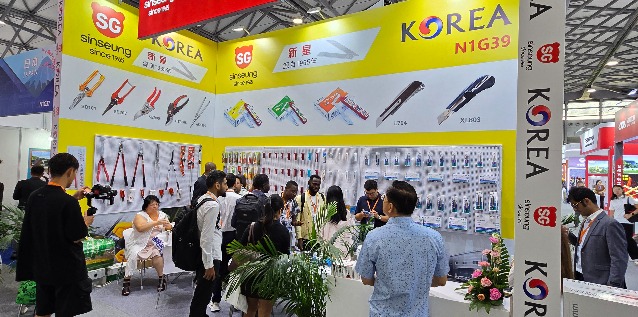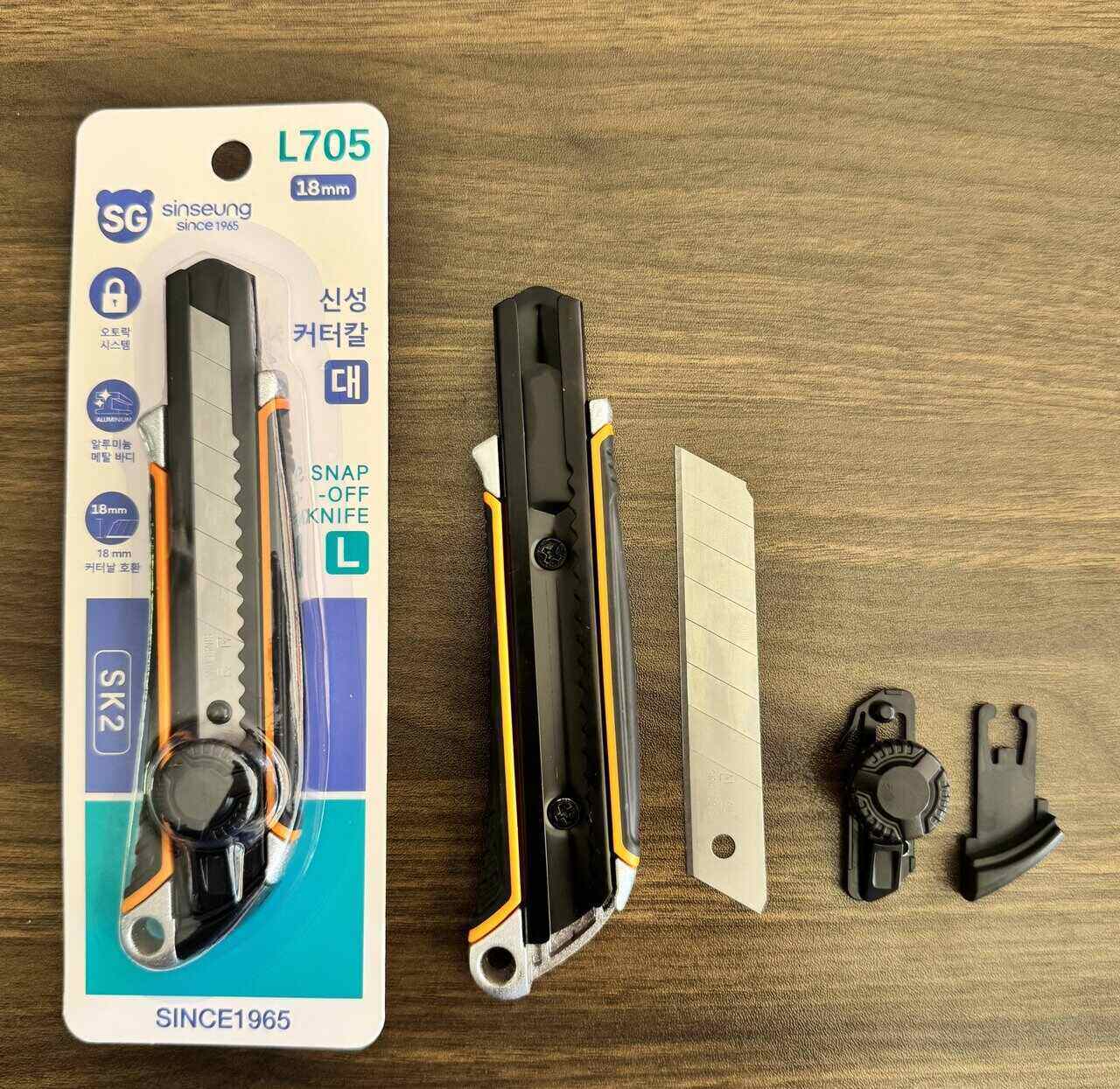Essential Tips for Replacing Box Cutter Knife Blades at Home or Work
2025-11-06

Understanding Box Cutter Knife Types
Common Types of Box Cutters
Box cutters, also referred to as utility knives, are essential tools in industries like construction, automotive detailing, stationery, and gardening. Two main types are widely used: retractable blade utility knives and snap-off blade cutters.
Retractable blade utility knives have a blade that extends or retracts via a slider mechanism. They are perfect for heavy-duty cutting tasks. They also provide improved safety when not in use. Conversely, snap-off blade cutters feature segmented blades. Users can break off a dull segment to access a fresh edge. This design is highly practical for those needing consistently sharp blades without frequent replacements.
Sinseung offers various products, including cutter blades, utility knives, hardware scissors, and garden tools. Cutter blades are their primary export product, followed by utility knives.
How Blade Mechanisms Differ
The primary distinction between these types lies in their blade mechanisms. Retractable blade utility knives use a locking system. This system secures the blade at various lengths. It allows precise control over cutting depth. In contrast, snap-off blade cutters have pre-scored lines on the blade. Users can snap off a worn segment using the knife’s built-in cap or pliers. This reveals a new, sharp edge.
Sinseung’s key models include the S503 9mm utility cutter knife and L704 18mm utility cutter knife for retractable types. For segmented designs, they offer S103 9mm snap-off blades and L203 18mm snap-off blades.
When to Replace a Box Cutter Blade
Signs of a Dull or Damaged Blade
Recognizing when to replace a box cutter blade is critical for efficiency and safety. Signs include increased resistance during cutting. Frayed or uneven cuts on materials like cardboard or vinyl wrap are another indicator. Visible nicks or rust on the blade edge also signal replacement.
Our success comes from our commitment to quality. We use top-grade materials and advanced manufacturing processes. This ensures our blades meet high standards in cutting efficiency, durability, and performance.
However, even high-quality blades wear out over time with regular use. For professionals in fields like auto wrapping or wallpaper installation, precision is vital. Even slight dullness can affect results.
Safety Risks of Using a Worn Blade
Using a dull or damaged box cutter blade increases injury risks. A worn blade requires more force to cut. This can cause slips and accidental cuts. It also strains wrist and hand muscles.
We rigorously oversee every production process. We conduct thorough quality inspections and testing. This ensures every blade performs its job perfectly. Yet, when performance declines due to wear from usage, timely replacement is essential for safety.
Preparing for Blade Replacement
Tools and Safety Gear Needed
Before replacing a box cutter blade—whether retractable or snap-off—gather the necessary tools:
-
Replacement blades (ensure they match your model)
-
Safety gloves
-
Safety goggles (optional but advised)
-
Small screwdriver (for some retractable models)
Sinseung uses the industry’s most advanced testing equipment. If defective blades are detected, we discard the previous and subsequent batches. This maintains consistent quality.
Wearing gloves prevents accidental cuts when handling sharp edges.
Creating a Safe Work Environment
Select a well-lit workspace with minimal distractions. Ensure the surface is clean and stable. This allows safe handling of the tool and replacement parts without slipping. Keep used blades out of reach until properly disposed of.
Step-by-Step Guide to Replacing Box Cutter Blades

For Retractable Blade Utility Knives
-
Fully retract the blade. Ensure the existing blade is completely retracted.
-
Open the casing. Use a screwdriver if needed to remove screws securing the casing.
-
Remove the old blade. Carefully lift it out using pliers or gloved fingers.
-
Insert the new blade. Align it properly in the designated slot.
-
Reassemble the knife. Securely close the casing.
-
Test the mechanism. Slide the blade in and out several times to confirm smooth operation.
Models like Sinseung’s L704 18mm utility cutter knife follow this standard process.
For Snap-Off Blade Cutters
-
Extend the blade slightly. Push out enough to expose one full segment.
-
Use the built-in snapper cap. Remove the rear cap from the handle. Align it with the scored line on the segment.
-
Snap off the segment. Apply firm downward pressure until the segment breaks cleanly.
-
Dispose safely. Place the broken segment in a designated disposal container immediately.
Snap-off models like Sinseung’s S103 9mm snap-off blades make this process efficient by design.
As a professional manufacturer, we collaborate closely with customers. We aim to understand their needs. We provide the most suitable solutions for them.
Safety Guidelines When Handling Utility Knives
Preventing Accidents During Use
To minimize risks during regular use:
-
Always cut away from your body.
-
Use a proper grip. Avoid excessive force.
-
Retract or cover the blade when not in use.
-
Replace dull blades promptly.
-
Avoid using damaged handles or locking mechanisms.
We emphasize ongoing training for our workers. This enhances their skills and quality control awareness. Similarly, users should stay informed about best practices for tool handling.

Safe Disposal of Used Blades
Improper disposal creates hazards for you and others handling trash later:
-
Use designated sharps containers.
-
If no container is available, wrap used segments in thick tape before discarding.
-
Clearly label disposal containers at workstations.
Sinseung’s commitment includes supporting customers in market development. This comprehensive approach highlights our strong quality control capabilities.
Box cutters are crucial tools across various industries. Their versatility suits tasks from cutting packaging materials to automotive films. Understanding the differences between retractable and snap-off types helps users choose based on their needs. Knowing how their mechanisms work aids in proper selection. Regular inspection ensures timely blade replacement. This maintains safety and enhances performance efficiency.
With brands like Sinseung—recognized globally since 1965 as South Korea’s leading cutter blade manufacturer—users have access to premium-grade products. They also benefit from personalized services tailored to industries like car wraps, stationery, construction, and gardening.
Whether using an L704 retractable utility knife or an S103 snap-off model from Sinseung’s lineup, safe blade replacement extends tool longevity. It also minimizes workplace hazards.
FAQ
Q1: What industries benefit most from Sinseung’s box cutter knife blades?
Sinseung’s products primarily serve industries like stationery, construction materials, automotive detailing, hardware, leather, and gardening.
Q2: Can I order custom-designed box cutter blades?
Yes, we provide tailored blade designs and brand options to meet your specific requirements.
Q3: Are there discounts available for bulk orders?
We offer discounts and preferential pricing for large orders.
Q4: What if my ordered product sells slowly?
If you face slow-selling issues with your product, we value long-term relationships with our customers.





